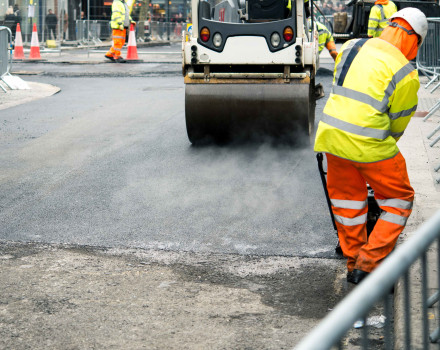What does your role involve?
My key focus as a sustainability engineer is looking at the energy we use in our designs; whether that’s how much energy is consumed in day-to-day operations, how to reduce energy use in existing buildings or how to increase the energy efficiency and the sustainability credentials on new build projects.
Our team is also responsible for implementing BakerHicks’ own sustainability initiatives, including the reduction of operational carbon to help us become a net zero business, reducing embodied carbon within new buildings and retrofits, and driving change within our clients to allow us to design low and net zero carbon buildings.
Alongside my role as a sustainability engineer, I’m also a licensed NABERS UK assessor and certified Passivhaus designer.
Can you describe what NABERS UK is?
In simple terms, NABERS is a scheme that measures a building’s operational performance by rating energy performance on a scale of 1–6 stars, with 3 stars being the benchmark for an office building and 6 stars considered as market leading.
The scheme was first launched in Australia where it is now well established and respected, with the data showing positive results. On average, buildings in Australia are saving between 30-40% on energy over the course of 10 years.
NABERS UK launched in 2020 with two distinct offerings: NABERS UK Energy for Offices assesses and ranks the operational energy performance of existing office buildings. It has recently expanded from Base Build Ratings to Tenancy Ratings and Whole Building Ratings, meaning all existing UK offices can now be rated.
NABERS Design for Performance, on the other hand, is specifically used for new build and retrofit offices, and is an agreement that a new building will be designed, built and operated to reach a 4-star NABERS UK rating as a minimum.
Does the knowledge gained benefit other schemes (outside of offices)?
In Australia, NABERS is already being applied to measure and rate a wide variety of buildings and sites, including hospitals, shopping centres, hotels, residential flats and apartments, and datacentres. As the scheme expands and grows in prominence here in the UK, I think we can expect to see wider application across the board.
How can we at BakerHicks, as well as our clients make positive changes from today?
NABERS ratings are carried out once a year which allows building owners to plan improvements to reduce their buildings energy emissions, with the aim of improving their star rating.
From a BakerHicks perspective, we can help our clients to see where they are using, or in some cases overusing energy and provide them with actionable plans to make improvements, which in turn will help them to increase their NABERS rating and potentially reduce their long-term costs.
These plans may involve big changes in processes, such as updating items of plant or machinery to enhance operational and energy efficiency, but equally, they can be smaller, incremental adjustments to what they are already doing. These might include, for example, improving controls, implementing timers or sensors for heating and lighting to ensure these are only used when required, or reducing plant run times. Drastic change isn’t always the answer, and a number of small improvements can help to make a big difference over time.
How will NABERS UK gain industry traction?
I think it’s a simple case of seeing and realising the benefits. For businesses and building owners, a NABERS assessment can help you to see exactly how much energy you are consuming and clearly identify areas where you can make improvements to not only improve efficiencies, but also make significant and vital operational cost savings.
The stronger rating your building has, the more energy efficient it will be, which can help to give you a competitive edge to prospective buyers and tenants.
And finally, how do you see the future of sustainability in engineering and how might NABERS evolve?
Quite simply, it is the future. The ‘design for compliance’ culture within the UK has led to the performance gap between the theoretical design performance and actual operational energy performance of a building. A scheme such as NABERS can help to overcome this.
*Since publication, administration of the NABERS scheme has been taken over by the Chartered Institution of Building Services Engineers (CIBSE).









